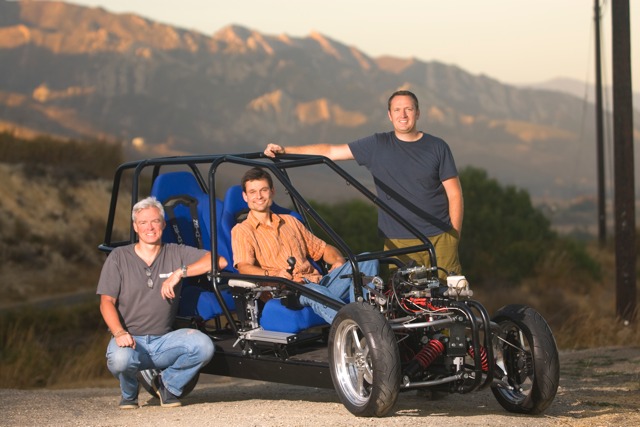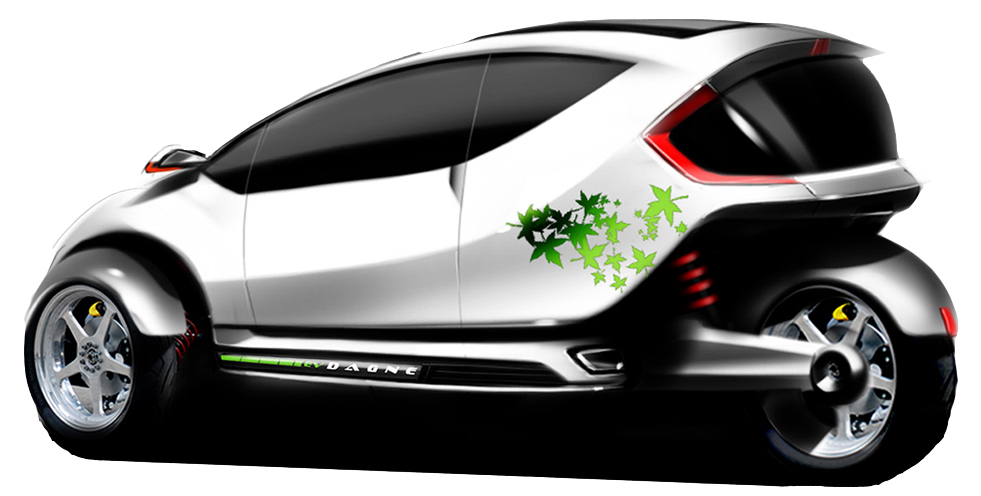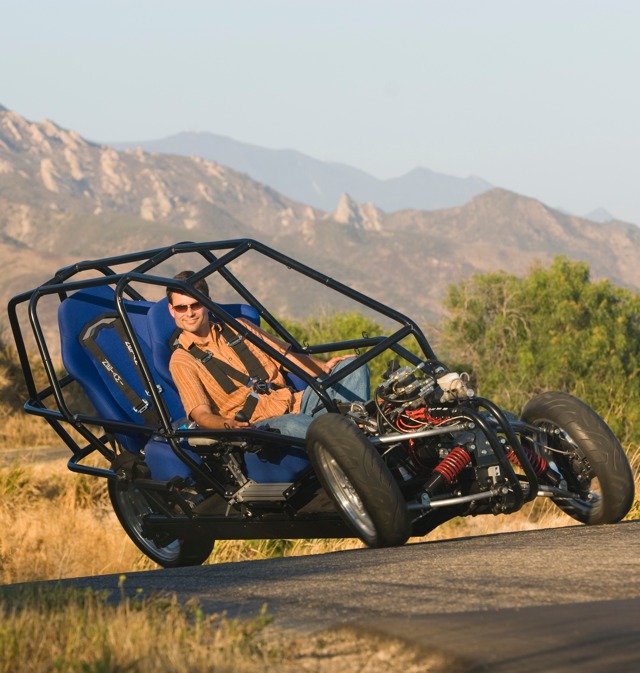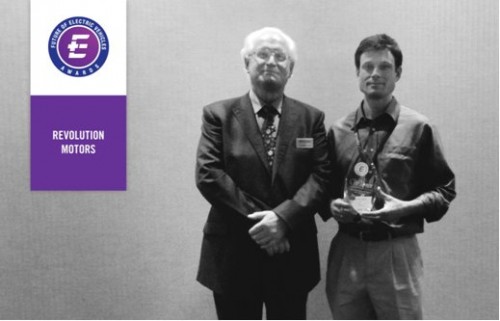Revving Up a Revolution
Goleta Auto Designers Win Award at ‘Future of Electric Cars’ Conference

In October 2008, Eric Sandoz and Ben Werner thought they had secured $40 million in seed capital to develop Goleta’s Revolution Motors, a company they had created to produce electric vehicles. Then the market crashed and their funder, Morgan Stanley, pulled out.
Sandoz, a PhD student at UCSB, says that maybe the loss of a huge venture capital infusion is the best thing that happened to them. “There is such a long history of start-up companies that get too much money too soon and then fail.”
Instead, Revolution Motors has had to grow in a deliberate fashion, doing more with less. Two weeks ago, they received a big boost of encouragement when their proof-of-concept car — named the Dagne after a character in Ayn Rand’s novel Atlas Shrugged — won the Most Imaginative Vehicle award at the IDKTechEx “Future of Electric Cars” conference in Silicon Valley. The award “was assessed on the technical development of the product, its market potential, and benefits it brings over alternatives.”

The Dagne is a narrow, three-wheeled, two-seater rechargeable electric vehicle with a 100-mile range. The steering, acceleration, and braking are controlled by a joystick instead of pedals and steering wheel.
Both in terms of business model and driving experience, Werner and Sandoz compare the Dagne to a motorcycle. The unique lean-steer control and hydraulic systems not only make the Dagne more stable when cornering, they give driver and passenger the motorcycle-like experience of carving into turns. Sandoz says the Dagne combines the feeling of driving a motorcycle with the convenience of a car.
Sandoz looks to Orange County Choppers (OCC) as a viable business model for Revolution Motors. The New York-based motorcycle builders started out by fabricating custom rides, but have now grown to the point where they manufacture production vehicles. Sandoz and Werner are hoping that early adopters in the area will purchase their first handmade vehicles and sustain them until they can afford to mass-produce.
Of course OCC was helped by the fact that founders Paul Teutel Sr. and Paul Teutel Jr. became the subjects of a hit TLC reality show that shared the name of their business. Since Sandoz and Werner do not sport the muscles, tattoos, or the Oedipal relationship that make the Teutels such good television fodder, it looks like they will have to attract capital on their own.

“People are looking for a paradigm shift in automotive,” says Werner. He better be right because he put the cash from in his 401k and the sale of his property to make Revolution Motors a reality. The term “paradigm shift,” now a part of our everyday lexicon, comes from The Structure of Scientific Revolutions, a seminal history of science text by Thomas Kuhn. It describes a new model for conducting research in a scientific field initiated by what he refers to as a revolution such as Copernicus’s heliocentric theory of astronomy. Revolution Motors is banking on consumers to accept a revolutionary new model for commuting, something big auto has been loath to offer.
When Sandoz was in high school, he wrote to Ford, Chrysler, and GM asking them what he should major in if he wants to make electric cars. They all essentially replied, he says, by telling him that mechanical engineers make cars. He gave up his dream until he and Werner — also a UCSB-trained engineer — hatched their plan to start Revolution Motors in 2005 while coworkers at Toyon Research Corporation.
While large auto manufacturers are slowly rolling out cars with alternative sources of propulsion, the cars themselves look and function much like cars always have. Moreover, electric vehicles are not affordable for the average consumer. The all-electric Chevy Volt sells for $40,000. In order to meet their goal of creating a vehicle that will eventually cost around $25,000 Sandoz and Werner made the Dagne half the width of a typical car. The reduced weight and increased aerodynamics require a smaller battery. This cuts down significantly in cost because batteries are the most expensive item in electric vehicles.
Werner says that the nonmechanical joystick-style control mechanism provides safety advantages over the traditional setup. It saves half a second in braking reaction time which would prevent a significant number of accidents. Eliminating the steering column also allows room for a more effective airbag. The drive-by-wire interface marks a significant deviation from major car manufacturers, which have stuck to mechanical controls unlike the aerospace and heavy machinery industries.

Werner is hoping to raise $350,000 by early 2011. The first sellable vehicle would roll out about a year-and-a-half later after proper fabrication and testing.
Although they named their prototype after a character in a text that questions the role of altruism in human pursuits, it is hard to avoid the fact that the founders of Revolution Motors are do-gooders at heart. They were both inspired by the documentary The End of Suburbia, which asks whether we can sustain our suburban lifestyles after the world has (arguably already) reached its peak oil supplies.
Sandoz prefers to use the term “sustainability” when discussing the environmental impacts of technology because it suggests both scientific rigor and a tangible goal. It also helps him to maintain distance from the typical associations of tree-hugging environmentalism. He says that environmental activism is not going to convince the residents of his rural, conservative hometown of La Grande, Oregon, to lead more sustainable lives. “When people tell them that they are horrible because they drive a truck, it doesn’t make them want to be more environmentally friendly.”
Sandoz believes that the Dagne perfectly splits the difference by offering a sustainable transportation alternative that also includes a pleasurable driving experience. He adds that it has three wheels because it is mechanically efficient, “not because it’s a gimmick.” He aims to give the next prototype a top speed of 120 miles per hour with zero-to-60 acceleration of five seconds.
And although Revolution has grown in fits and starts, it is only one division of a larger business venture called Multi-Mode Technologies, LLC, which Werner hopes will one day provide petroleum-free methods of organic farming and food distribution as well as home energy alternatives. Says Werner, “I’m fundamentally about community transformation when it comes to sustainability.”



